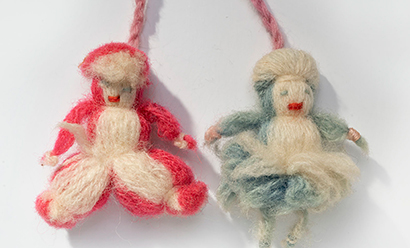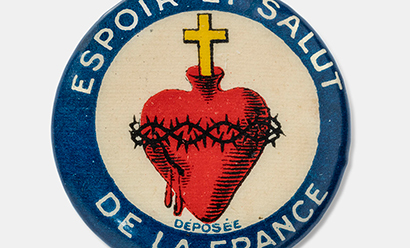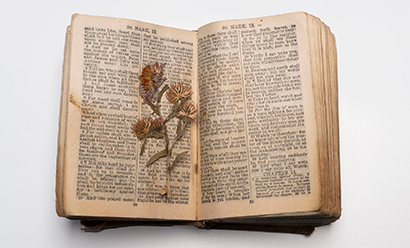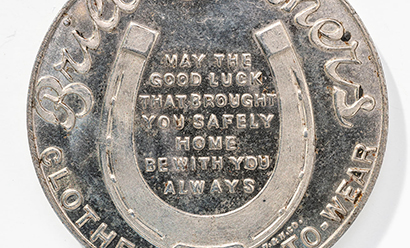
“When I rejoined my men at the northern edge of the woods, I learned that no one had been hurt during my absence, but that a few minutes after I had left a sharp fragment, like a railroad spike, had riven itself deep into the bank just where my chest had been. Call it Luck or call it Providence, it was with me on the Eleventh of October, or I would not be alive today.”
—Lieutenant Edward C. Lukens, 320th Infantry
Providence is a protecting force – whether God, many gods, spirit or nature.
Introduction
Surrounded by industrial violence and death, servicemembers of World War I renewed faith, discovered magic and witnessed miracles in everyday and extraordinary objects. Small, personal belongings helped fighting forces and war workers hold on to hope, whether in the muddy trenches of the Western Front, on the waves of the South China Sea or flying high above the clouds. Optimistic desires – for an end to war, for meaning in suffering and a reunion with family – filled their possessions.
War became terrain for supernatural devotion, where objects and prayers shaped how soldiers expressed faith. Whether military members or volunteers, multitudes expressed belief in something – or someone – greater than themselves with cherished objects of faith, hope and luck.
Explore these personal items that gave comfort during the challenging times of war.
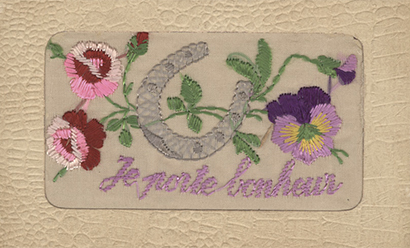
Good Luck Postcards
Easy to mass-produce and popular, porte bonheur (good luck) postcards sold in millions across combatant countries.
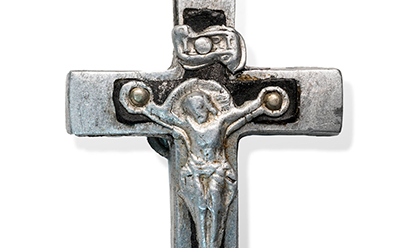
Crucifixes and Rosaries
Many Christians serving in WWI wore crosses in their everyday lives. When called to fight, these emblems of faith went with men into battle.

Pocket Saints
Many servicemembers looked for divine help through saints and the Holy Family, aided by items that could fit in a pocket.

Devotional Medals
Devotional medals feature inscriptions, holy places, patron saints and other religious symbols to invoke divine protection from all manner of harm.
Conclusion
The small, personal objects of World War I servicemembers tell stories of optimistic hope, devout faith and unshakeable luck. Attachment to these sacred and everyday items produced feelings of love and protection and held beliefs as great as a “window to heaven” or as small as a wish for home.
In the chaotic furnace of warfare, mass-produced trinkets became potent talismans to ward off death, and holy items forged even greater supernatural power. Faith, hope and luck may at first glance appear to be bygone superstitions, out of place during the dawn of artillery fire and machine gun nests, but these traditions are strong and still found on battlefields today. As these potent objects reveal, servicemembers fighting in the Great War knew magic and miracles were powerfully modern.
Charmed Soldiers is made possible through generous support from Lilly Endowment Inc.

